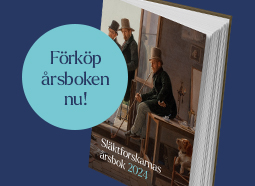Nu tar veckans svenskamerikan semester och återkommer igen i augusti. Vi avslutar säsongen med en krigshjälte som under andra världskriget gav sitt liv för sitt nya hemland.
Eric Gunnar Gibson föddes den 3 oktober 1919 i Nysund församling i Värmland. Hans föräldrar var Erik Erland Gibbson (född 1897) och Agda Ottilia Andersdotter (född 1898). I familjen fanns även brodern Egon (född 1921). Familjen hade utvandrat till USA i början av 1920-talet och bosatt sig i Chicago.
Eric tog värvning i den amerikanska armén i februari 1941 och var då fortfarande svensk medborgare. Den 28 januari 1944 tjänstgjorde han som kock vid 30th Infantry Regiment, 3rd Infantry Division i Cisterna di Latina nära Isolabella i Italien. Allierade trupper hade landstigit vid staden Anzio i Italien den 22 januari 1944. Eric hade övertalat sitt befäl att få tjänstgöra som gevärsskytt och ledde en mindre styrka som ryckte fram längs ett vattendrag när de råkade i strid med tyska trupper. Han anförde sina trupper och attackerade de tyska posteringar tre gånger på egen hand. Eric dödade fem tyskar och tillfångatog två. Han dödades när han attackerade en fjärde postering. Den 11 september 1944 tilldelades han Medal of Honor postumt. Eric är begravd på Nora kyrkogård i Rice Lake, Wisconsin. Ett av amerikanska flottans fartyg är döpt efter honom och en minnessten restes över hans grav 1999.
Medal of Honor
Den officiella motiveringen till tilldelningen av medaljen lyder enligt följande:
Technician Fifth Grade Gibson's official Medal of Honor citation reads:
"For conspicuous gallantry and intrepidity at risk of life above and beyond the call of duty. On January 28, 1944, near Isolabella, Italy, Tech. 5th Grade Gibson, company cook, led a squad of replacements through their initial baptism of fire, destroyed four enemy positions, killed 5 and captured 2 German soldiers, and secured the left flank of his company during an attack on a strongpoint. Placing himself 50 yards in front of his new men, Gibson advanced down the wide stream ditch known as the Fosso Femminamorta, keeping pace with the advance of his company. An enemy soldier allowed Tech. 5th Grade Gibson to come within 20 yards of his concealed position and then opened fire on him with a machine pistol. Despite the stream of automatic fire which barely missed him, Gibson charged the position, firing his submachine gun every few steps. Reaching the position, Gibson fired pointblank at his opponent, killing him. An artillery concentration fell in and around the ditch; the concussion from one shell knocked him flat. As he got to his feet Gibson was fired on by two soldiers armed with a machine pistol and a rifle from a position only 75 yards distant. Gibson immediately raced toward the foe. Halfway to the position a machinegun opened fire on him. Bullets came within inches of his body, yet Gibson never paused in his forward movement. He killed one and captured the other soldier. Shortly after, when he was fired upon by a heavy machinegun 200 yards down the ditch, Gibson crawled back to his squad and ordered it to lay down a base of fire while he flanked the emplacement. Despite all warning, Gibson crawled 125 yards through an artillery concentration and the cross fire of 2 machineguns which showered dirt over his body, threw 2 hand grenades into the emplacement and charged it with his submachine gun, killing 2 of the enemy and capturing a third. Before leading his men around a bend in the stream ditch, Gibson went forward alone to reconnoiter. Hearing an exchange of machine pistol and submachine gun fire, Gibson's squad went forward to find that its leader had run 35 yards toward an outpost, killed the machine pistol man, and had himself been killed while firing at the Germans".
Medal of Honor instiftades 1862 under det amerikanska inbördeskriget och ersatte då Badge of Military Merit som George Washington instiftade 1782. Fram till 1917 kunde även civila erhålla medaljen. Ytterligare tre svenskar har tilldelats medaljen: År 1862 Brigadgeneralen Ernst von Vegesack (1820-1903), år 1898 flottmatrosen Gustaf Adolf Sundquist och år 1900 marinkårskorpralen John Olof Dahlgren. Totalt har drygt 3 500 medaljer delats ut sedan 1862.
 Rötter - din källa för släktforskning driven av Sveriges Släktforskarförbund
Rötter - din källa för släktforskning driven av Sveriges Släktforskarförbund




.png)



